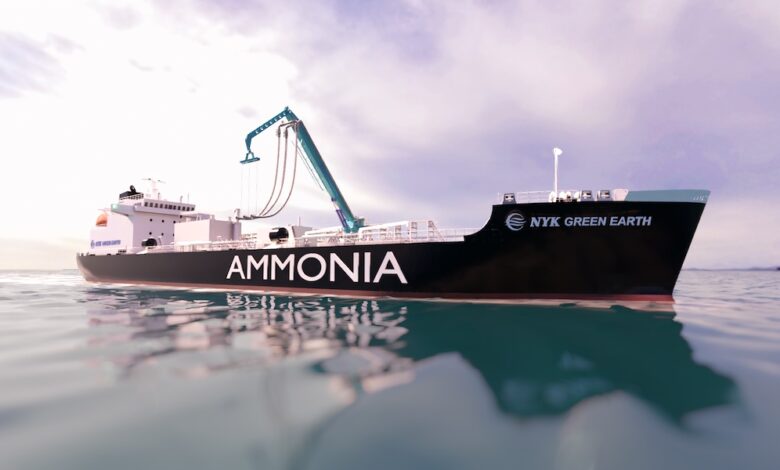Good week for ammonia in the future fuel race

Proponents of ammonia as shipping’s ultimate future fuel have had a good week with plenty of news to support the potential transition.
Engine maker MAN Energy Solutions has revealed following many tests it is now on track to deliver its first ammonia engine in late-2024, with the full commercial release of the two-stroke engine set for 2025. While MAN did not reveal the name of the owner for this first engine, Splash believes it will be installed on one of the raft of LPG/ammonia carriers ordered by Nippon Yusen Kaisha (NYK) in Japan.
Meanwhile, WinGD, a Chinese-controlled, Swiss-based engine maker has just received an approval in principle from Lloyd’s Register for its two-stroke ammonia engine design.
WinGD’s new X‑DF‑A engine, like its methanol-fuelled counterpart X‑DF‑M, will operate on a high-pressure diesel-cycle combustion process, with liquid ammonia fuel injection supported with a low portion of pilot fuel.
Earlier this week, the International Energy Agency (IEA) said in a 2023 update of its Net Zero by 2050 report that shipping will primarily turn to ammonia to decarbonise the sector.
“Ammonia is the primary low-emissions fuel used to decarbonise shipping, with the contributions from biofuels and hydrogen limited in large part by their relatively high costs,” IEA said.
Writing the introduction for Splash’s recently published Ship Concept 2030 magazine, Dr Roar Adland, global head of research at SSY, and Dr Tristan Smith, reader at UCL Energy Institute, commented on the future fuel race: “From a purely economic point of view, few would disagree that ammonia is the frontrunner: The production of sufficiently cheap hydrogen is the constraint for all alternative fuels, but all green fuels except ammonia are subject to the additional cost and constraint of carbon extraction.”
